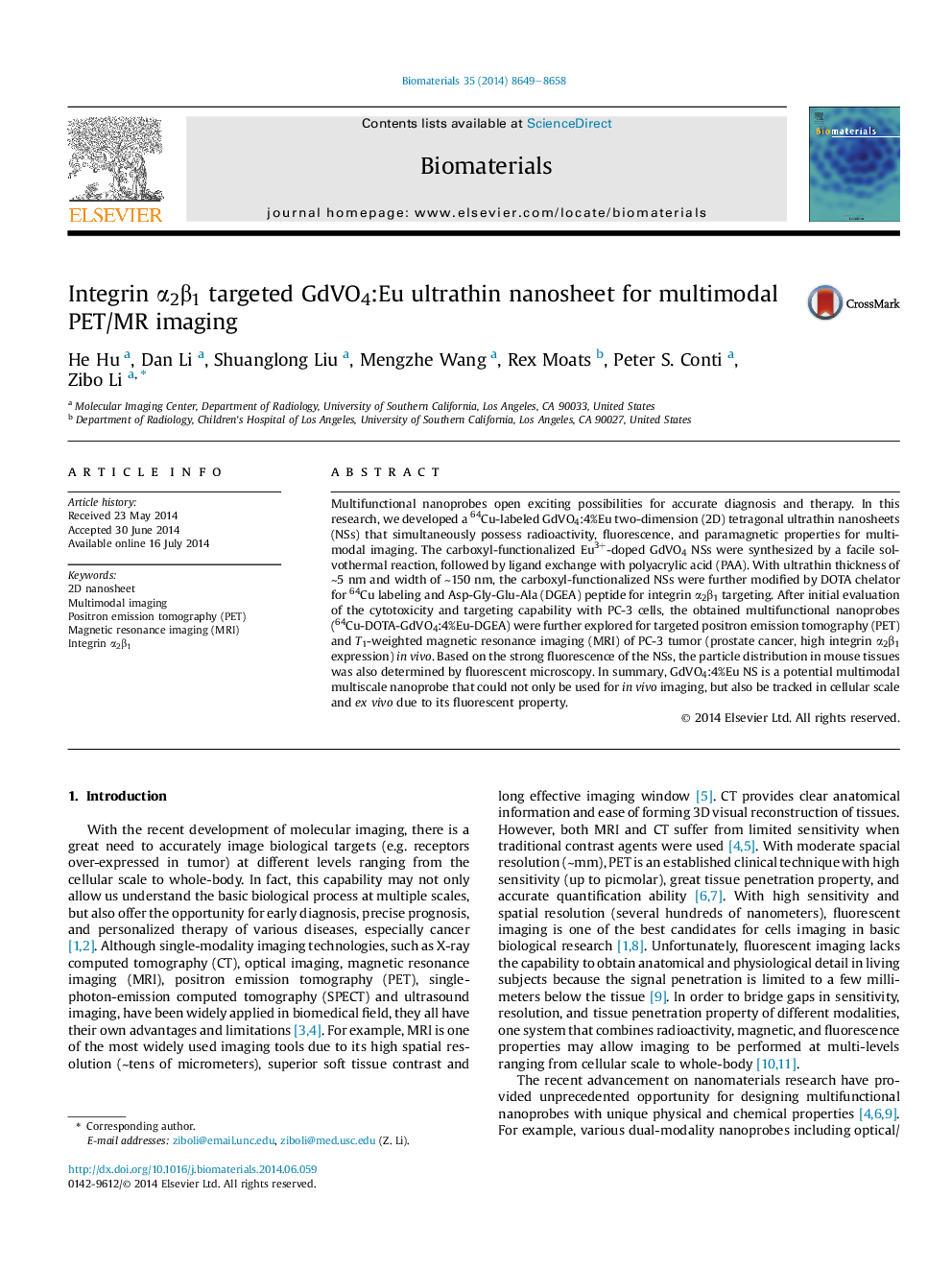| Article ID | Journal | Published Year | Pages | File Type |
|---|---|---|---|---|
| 10227388 | Biomaterials | 2014 | 10 Pages |
Abstract
Multifunctional nanoprobes open exciting possibilities for accurate diagnosis and therapy. In this research, we developed a 64Cu-labeled GdVO4:4%Eu two-dimension (2D) tetragonal ultrathin nanosheets (NSs) that simultaneously possess radioactivity, fluorescence, and paramagnetic properties for multimodal imaging. The carboxyl-functionalized Eu3+-doped GdVO4 NSs were synthesized by a facile solvothermal reaction, followed by ligand exchange with polyacrylic acid (PAA). With ultrathin thickness of â¼5 nm and width of â¼150 nm, the carboxyl-functionalized NSs were further modified by DOTA chelator for 64Cu labeling and Asp-Gly-Glu-Ala (DGEA) peptide for integrin α2β1 targeting. After initial evaluation of the cytotoxicity and targeting capability with PC-3 cells, the obtained multifunctional nanoprobes (64Cu-DOTA-GdVO4:4%Eu-DGEA) were further explored for targeted positron emission tomography (PET) and T1-weighted magnetic resonance imaging (MRI) of PC-3 tumor (prostate cancer, high integrin α2β1 expression) in vivo. Based on the strong fluorescence of the NSs, the particle distribution in mouse tissues was also determined by fluorescent microscopy. In summary, GdVO4:4%Eu NS is a potential multimodal multiscale nanoprobe that could not only be used for in vivo imaging, but also be tracked in cellular scale and ex vivo due to its fluorescent property.
Keywords
Related Topics
Physical Sciences and Engineering
Chemical Engineering
Bioengineering
Authors
He Hu, Dan Li, Shuanglong Liu, Mengzhe Wang, Rex Moats, Peter S. Conti, Zibo Li,
